How many times have you seen a post on Facebook and thought “I should share that!”? It’s an impulse we all feel, but is there more to it than just wanting to help out our friends? Sharing content may seem like a small way to make the world a better place, but it’s actually one of the most important digital marketing strategies.
We live in a digital world, and the digital marketing landscape is constantly changing. In order to stay ahead of the curve, businesses need to focus on digital content that resonates with their target audience. People want connection, and sharing is one way of connecting with others. We all have our personal brand, and the digital content we share reflects who we are. The more connected we feel, the more motivated we are to continue sharing. Read on to learn more about how we, as digital marketers, can make connections by building relationships through our content.
Web Accessibility Myths: Debunking 7 Common Misconceptions
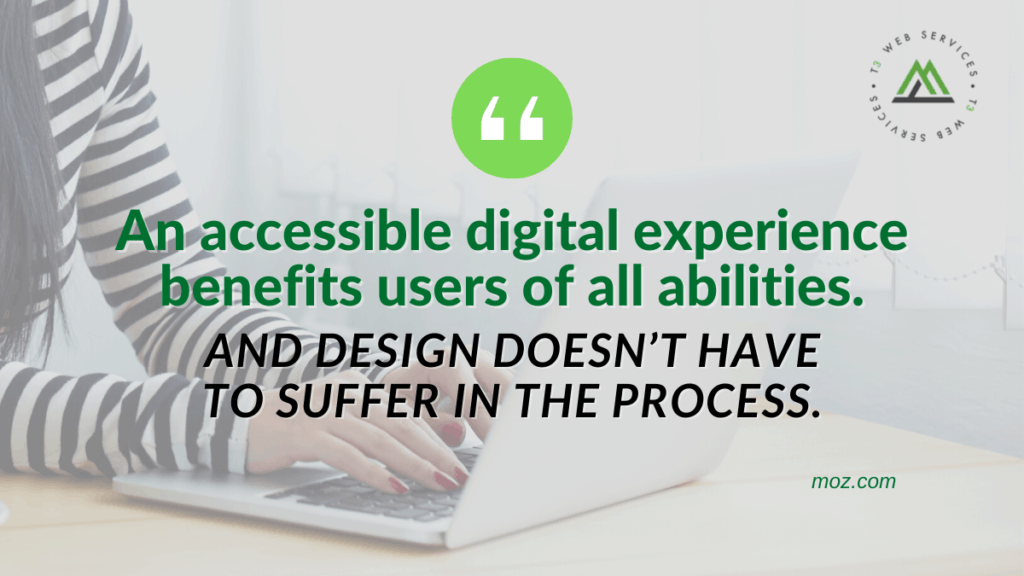

What is website accessibility, and why should you care?
Website accessibility is the practice of making your website usable by the widest possible group of people, regardless of their ability. Generally, online accessibility refers to functionality designed for individuals with disabilities — those who may have a visual impairment, an auditory limitation, motor control difficulties, neurological disorders, a learning disability, or age-related ability impairment.
Myth 1: Only a small percentage of the global population has a disability.
The numbers may surprise you: In the US, the proportion is larger still: the CDC estimates that 26% of US adults are living with a disability.
Myth 2: Making a website accessible is costly and time-consuming
The truth is, making a website compliant and immediately more accessible does not have to take a significant amount of time or cost a lot of money. Our research suggests that around two-thirds of accessibility issues can be uncovered and resolved using automated technology, which massively accelerates and reduces the costs of remediation.
Myth 3: Using automated tools on my site is all you need to do to make it accessible
More than 65% of companies surveyed by AudioEye believe simply adding a toolbar to a website makes it accessible. More than half think AI, or automation, alone equates to a site that is fully functional for all users.
Here’s the fact: Artificial intelligence is sophisticated and getting better. But automation on its own will never identify and fix every accessibility error.

Read more: https://moz.com/blog/web-accessibility-myths
How to Use Instagram Hashtags for Business: A Guide for Marketers
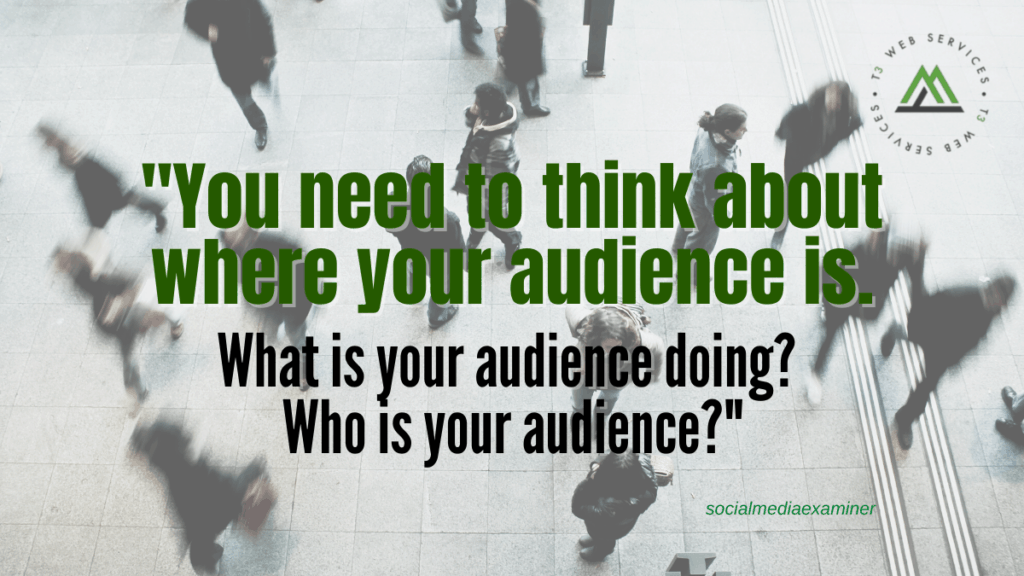

How Many Instagram Hashtags Should You Use in Feed Posts?
You can use up to 30 hashtags and anything beyond that won’t show up in search. But your first 30 are free to use however you want. But should you use 30?
I recommend using at least 15–20. In general, more is better. Go for all 30 if you use them well. Include as many as you can use strategically while staying relevant to your business.
For some marketers, coming up with that many hashtags might sound like a tall order. Maybe you can think of three or four off the top of your head but how can you come up with 15–20 hashtags? That’s where the super-secret recipe comes into play.
Which Hashtags Should You Use in Your Instagram Feed Posts?
Simply adding a long list of hashtags to your Instagram feed posts isn’t enough. The key is to find relevant hashtags for your business.
Don’t use popular hashtags like #love or #vacation, or something that’s trending or hyper-popular because those hashtags aren’t related specifically to your business and are too concentrated. Instead, pick hashtags that are very specific to your industry, the content you’re posting, or what you offer as a solution.
Where Should You Put Your Instagram Hashtags?
Caption or comment, does it matter? In reality, no. Some studies say it’s slightly advantageous to put them in the caption. Some people prefer to put them in the comment to hide them so they don’t look spammy. The algorithm doesn’t judge your content based on where you put the hashtags. Nor will the placement affect search results. Both tactics work. It’s really more a matter of personal preference as to where you put your hashtags.

https://www.socialmediaexaminer.com/how-to-use-instagram-hashtags-business-guide-marketers/
8 Examples of What Qualifies As Evergreen Content – and 10 Examples of What Doesn’t


Case studies
Although the data presented in a particular case study becomes a bit outdated over time, the piece itself will remain relevant, as others will use it in their research.
Tutorials and how-to guides
There are plenty of reasons why how-to posts are trending. First of all, they are always relevant as they offer solutions to some recurring issues that people never stop facing. Besides, such materials are easy to read, and they are proven to drive lots of traffic.
Glossaries of terms
This type of content is meant for defining the main niche-related terms. Although every niche faces numerous changes over some time, the key terms typically remain unchanged. Thus, such pieces remain evergreen as long as the niche itself is relevant.
Resource lists posts
Similarly to how-to’s, list posts are super easy to read. Therefore, if you include some evergreen ideas into such a material, it will keep bringing you benefits over the years.
Industry FAQs
Frequently Asked Questions are just that: questions that are frequently asked. FAQs are consistently considered evergreen posts because they continually provide answers to questions that are not usually limited to a specific period of time.
Your own original research
Original research can drive organic traffic by providing information that might not be readily available elsewhere. When creating your own original research summaries, make sure you avoid dated language, such as language that references current seasons, weather patterns, and other identifiers that may make readers feel as though the content is not relevant to their current set of needs.
Tools posts
Posts that impart your wisdom by delivering tools for others to accomplish their goals are one of the most effective types of evergreen blog post, as these posts allow readers to avoid their own long-term research regarding how to yield specific results.

Read more: https://nealschaffer.com/evergreen-content/
How to Grow and Engage an Audience on Instagram
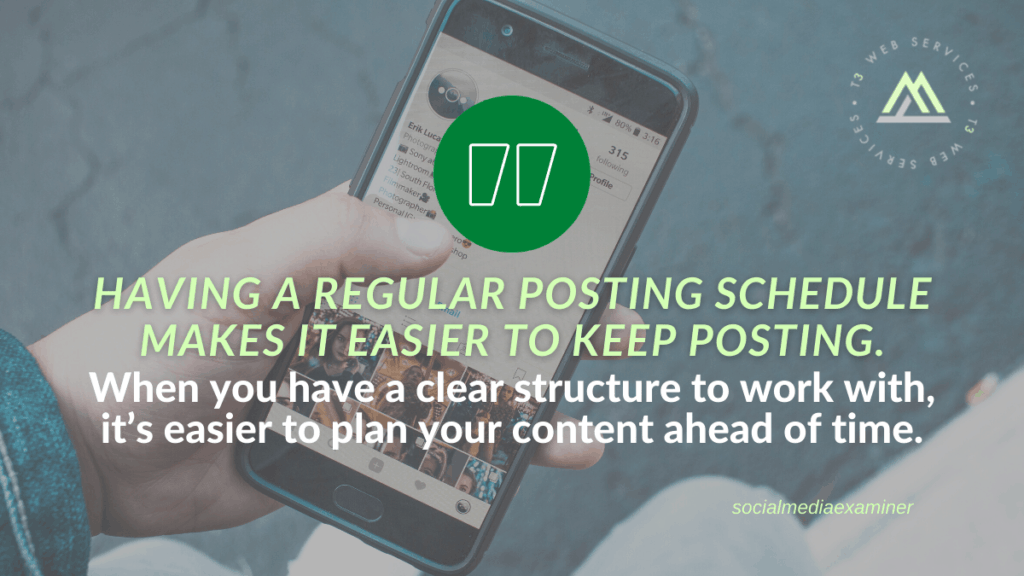

#1: Create a Regular Instagram Posting Schedule
Use the tools available to make this easy on yourself. First, track your Instagram Insights to find your followers’ most active days and times. By posting at strategic moments, you’ll get more engagement effortlessly. As a general rule, most people are active on weekdays during working hours and evenings. But your audience may differ or change over time.
#2: Post Instagram Content That No One Else Can
Try to share content that no one else can. Share detailed knowledge about your field. Show behind the scenes of your business. Profile your employees. Offer advice that can only come from the experience of running your business.
#3: Encourage User-Generated Content on Instagram
Producing genuinely unique, attention-grabbing content for Instagram is a lot of work. Fortunately, you can give yourself a break by introducing other content into the mix. Remember, you still want to show what makes your brand unique… but you can outsource the content production.
#4: Write Longer Instagram Captions
Longer Instagram captions will take up more of your followers’ attention, give them more opportunities to respond, and keep them coming back as they refer to the post. You’re aiming to write a caption that makes people save the post—whether it’s inspirational, instructional, or a fascinating conversation.

https://www.socialmediaexaminer.com/how-to-grow-and-engage-an-audience-on-instagram/
These are the 23 Types of Content Marketing Your Business Needs to Know About
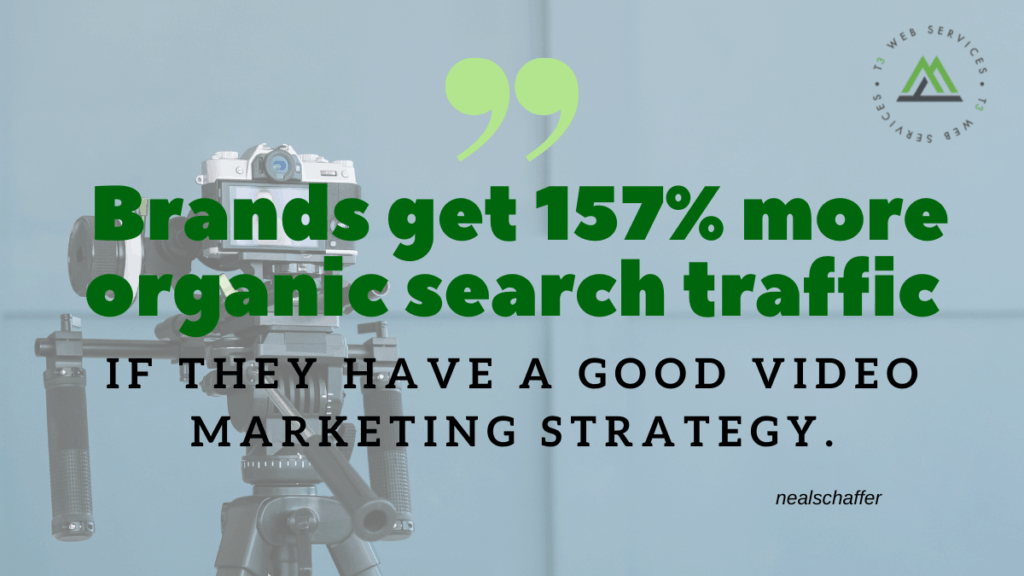

1) Blog Post Articles – web search engines like Google. Businesses with blogs have almost double the backlinks and over four times the indexed pages of business sites without blogs. These blogs also make up around 86% of overall content marketing.
2) Video Content – YouTube. While most video content falls in between these length extremes, it’s a valuable modality. 54% of consumers love to see videos from their favorite brand, and that this is the highest level of interest across content types.
3) Podcasting – Apple Podcasts, Spotify, Google Podcasts. No matter which distribution options you choose, Podcasting is a highly effective way to reach your customers. One reason that it’s so effective is that you can literally take a podcast episode anywhere.
4) Live streaming – Lots of fun can be had talking about your products. For a great idea, consider doing a giveaway along with an influencer or brand ambassador.
5) Audio streaming – Similar to livestreaming, you can also stream audio. In this case, you’re going to only record and distribute audio content.
6) Photos / Images – They’re also the oldest, going back to the days of print newspapers and magazines. However, that isn’t to say that photos must be boring. In fact, photo editing lets you create dynamic pieces of content.

https://nealschaffer.com/types-of-content-marketing/
WordPress Dominates Market Share Of Top 10,000 Websites
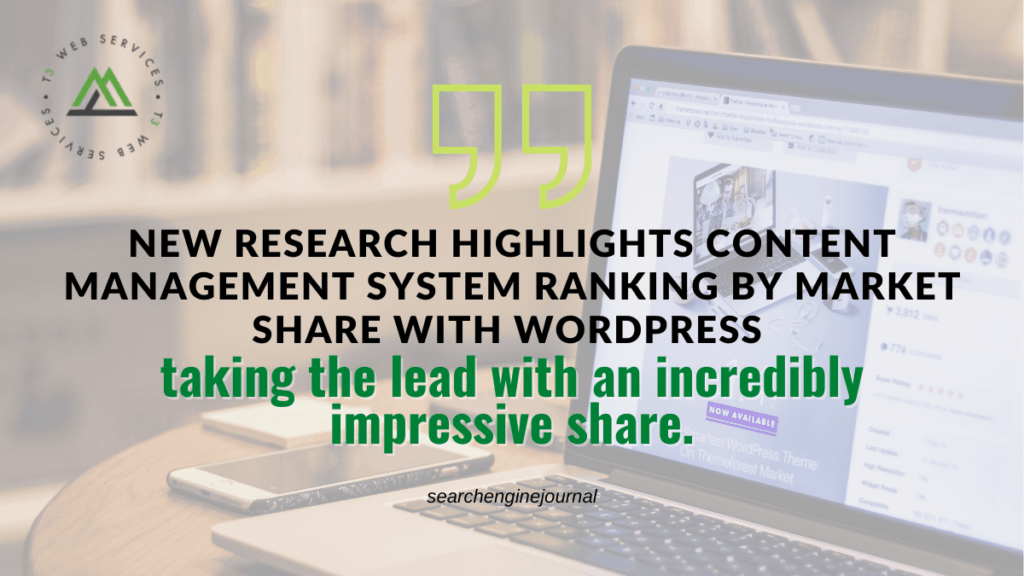

Market Share Results
It was expected that the majority of top sites would use a private custom content management system, and the research confirmed that, with 7,612 (76.12%) of top sites using a CMS that was not publicly available.
However, of the top sites with a publicly available content management system, WordPress was the platform of choice for 1,057 (10.57%).
That means that WordPress owns 44.26% of the CMS market share.
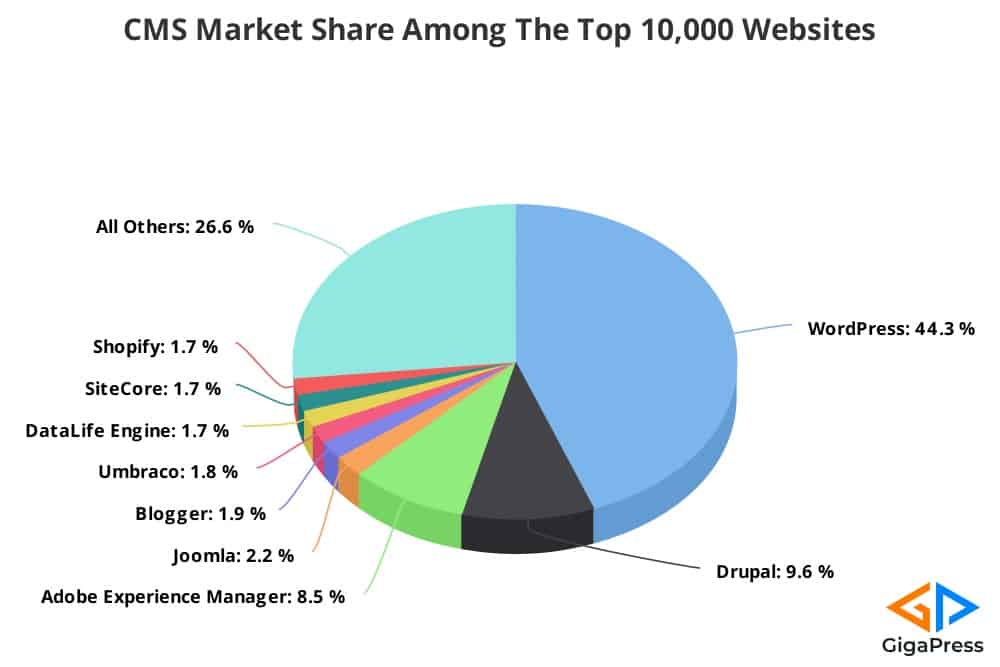
Of course, the site will need to be continually maintained and optimized to assist with growth and stay current with Google Algorithm updates, but it is entirely possible that the platform will continue to operate well even if your site popularity increases considerably.

https://www.searchenginejournal.com/wordpress-dominates-market-share-of-top-10000-websites/415113/
Why social sharing is the world’s most awesome content marketing metric
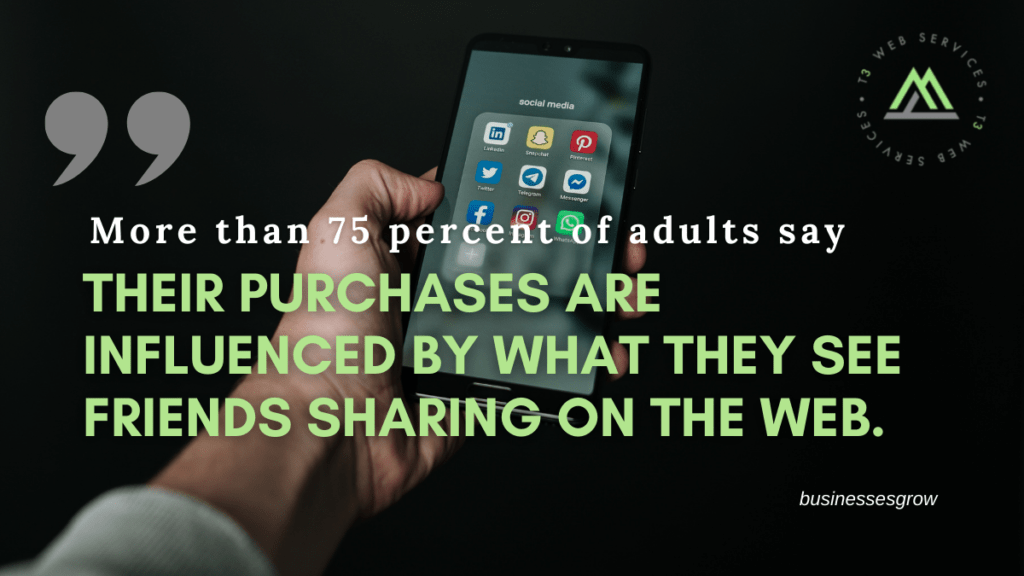

What does it take to get people to share your content?
- It has to be share-worthy. Your content has to be deeply relevant, interesting, timely, and entertaining. You need to constantly tune to your audience and adjust to evolving needs, tastes, and trends.
- You have to show up. You can’t just dump content into the marketplace and hope for something to happen. You need to consistently engage in a way that encourages social sharing.
- Finally, you need to know who is sharing your content. These are the special people who are driving the economic value of your content marketing effort. Do you know them by name? Do you treat them like royalty?
The New York Times Customer Insight Group published a study, “The Psychology of Sharing,” which explains five reasons people share content:
1. To bring valuable and entertaining content to others
Sharing content is one little way we can change the world. We want to inform, amuse, and help the people in our lives, and that’s why 94 percent of people say they share on social media.
2. To define ourselves to others
People share content because they want to look cool. We all have our personal brand, and the content we share reflects our identities. You are what you tweet. So it’s no surprise that 68 percent of people say they share on social media to communicate who they are and what they care about.
3. To grow and nourish relationships
People also share as a means to make and maintain connections. The research revealed that 73 percent of people share online to meet others with shared interests and 78 percent share because it enables them to communicate with people they otherwise wouldn’t stay in touch with.



Leave a Reply